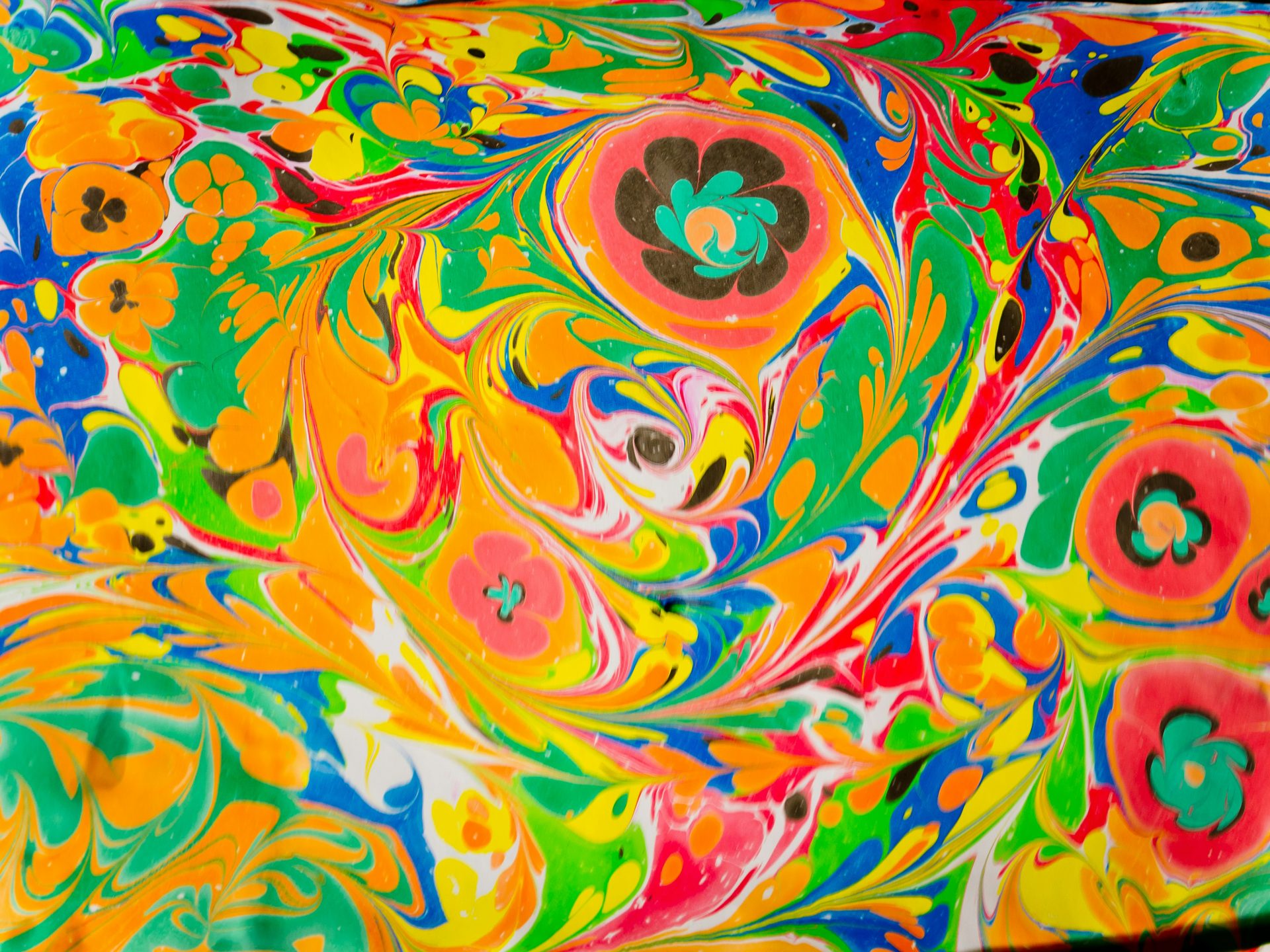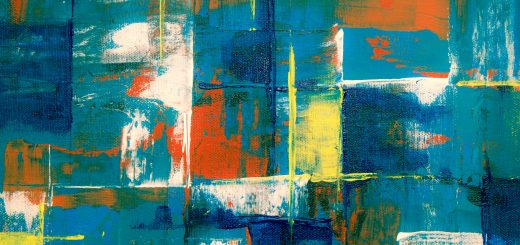The Artistic Masterpieces of the Aztec Empire

Before diving in, please note: This post is for informational purposes only. If you’d like to know more about how we approach topics, feel free to check out our friendly Disclaimer Page.
Hey there, amazing readers! 🖐️ Just a quick note: yes, we know there are a lot of ads here. Trust us, we get it—it’s not the prettiest look, but they help us keep this blog alive and kicking. Those pesky little ads cover the costs of all the behind-the-scenes magic, from hosting and tech stuff to creating content we hope you’ll love.
We’re committed to delivering quality posts, and your support (even just sticking around despite the ads) means everything to us. So, bear with us, and thanks for helping us keep the good vibes rolling. Now, on to the fun stuff! 😉
TRANSLATE BUTTON AT THE END OF THE ARTICLE
A Quick Overview
The Aztec Empire, flourishing from the 14th to the 16th centuries in what is now Mexico, was not just a civilization of warriors and traders; it was also a beacon of artistic brilliance.
The artistry of the Aztecs is a vibrant tapestry that reflects their rich cultural heritage, spirituality, and intricate societal structure.
Today, we will dive into the world of Aztec art, exploring its many forms, from architecture to jewelry, and uncover how these masterpieces continue to resonate with us today.
Introducing Aztec Artistic Brilliance
When I first stumbled upon Aztec art, I was astounded by its depth and variety.
The Aztecs weren’t just painting pretty pictures; they were telling stories, expressing beliefs, and crafting a visual language that spoke volumes about their way of life.
Think of it like a stage, where each element sets the scene for a grand performance steeped in meaning.
Their artistic expressions range from stunning murals and intricate pottery to monumental sculptures and architectural wonders, each piece whispering tales of a forgotten era.
The heart of Aztec art lies in its connection to the people.
Art was not just an afterthought; it was woven into the very fabric of their existence.
They used their creative talents to honor their gods, celebrate life events, and document their history.
Their art is a reflection of their identity and an invitation for us to understand their perspective.
So, what makes Aztec art so captivating?
Well, it’s a blend of imagination, technique, and dedication.
Each piece is a testament to their cultural values and worldview.
I can almost feel the energy of the artisans as they chiseled away at stone or painted vivid colors on pottery.
It’s like peering into a window that opens up to a world full of life, spirituality, and creativity.
The Rich Tapestry of Aztec Cultural Heritage
Diving deeper into the roots of Aztec culture, we see a vibrant mix of influences.
Their art was shaped by various factors, including religion, mythology, and nature.
The Aztecs believed in numerous gods, and their art often reflected this divine connection.
Temples adorned with intricate carvings of deities captured the essence of their spiritual beliefs.
The Aztecs had a unique way of merging their artistic practices with their daily lives.
For instance, their celebrations were often adorned with colorful banners and masks, showcasing their artistry in a lively, dynamic context.
The festivals were not just social events; they were a vivid canvas where art came alive, dancing in the rhythms of music and the laughter of the people.
Each piece of Aztec art serves as a historical document.
It tells us about their societal norms, aspirations, and struggles.
The patterns and symbols used were not arbitrary; they had meanings, often tied to the natural world.
For example, the jaguar symbolized strength and power, while the eagle represented the sun and the heavens.
These elements were more than decorative; they grounded their existence in nature.
Moreover, the Aztecs were master storytellers.
They used art as a narrative device, communicating their history and beliefs without the need for written words.
Their codices, filled with illustrations and symbols, conveyed tales of creation, conquest, and daily life.
These visual stories allowed their culture to flourish, even in the face of adversity.
Iconic Aztec Architecture: A Testament to Innovation
When we think of Aztec art, we often envision small sculptures or pottery.
However, their architectural feats are nothing short of breathtaking.
The Templo Mayor in Tenochtitlan, the heart of the Aztec Empire, stands as a monumental example.
This temple complex was not only a religious site but also a symbol of their power and ingenuity.
The construction techniques used were impressive.
They built their structures using locally sourced materials like volcanic stone, which not only made the buildings sturdy but also gave them a unique look.
Walk into the ruins of these temples today, and you can still sense the grandeur of their vision.
The layout was meticulously planned, allowing for both spiritual and societal functions.
What’s fascinating is how the Aztecs integrated their architecture into the landscape.
They didn’t just place buildings randomly; they aligned them with celestial events, such as solstices and equinoxes.
It was as if they were crafting a dialogue with the cosmos.
Standing at the base of these pyramids, I often find myself marveling at how they reached for the heavens with their stone structures.
These architectural wonders were adorned with intricate carvings and vibrant colors.
They used murals and sculptures to tell stories of their gods and significant events.
Even the layout of the cities reflected their artistic sensibilities, with plazas and marketplaces designed to create a visually stunning and functional community space.
The ingenuity of Aztec architecture didn’t stop at temples.
They also built expansive causeways, canals, and chinampas (floating gardens), showcasing their environmental adaptability.
Their ability to innovate in both structure and function speaks volumes about their artistic mastery.
Sculptural Marvels: Stone Carvings of the Aztecs
The Aztecs were not just builders; they were exceptional sculptors.
The stone carvings they created are both intricate and powerful.
From massive monoliths to small, detailed figures, each piece tells a different story.
Take the famous Coatlicue, the earth goddess, whose sculpture depicts her with a skirt of serpents and a necklace of human hearts.
It’s a striking example of their ability to merge beauty with raw emotion.
These sculptures often served a dual purpose; they were not just works of art but also religious artifacts.
Many were placed in temples to honor gods or commemorate significant events.
The artists poured their devotion and skill into these pieces, creating a lasting legacy that continues to captivate us today.
What’s particularly interesting is the symbolism embedded in their work.
Each figure, pose, and expression conveyed deeper meanings.
For instance, the depiction of warriors often emphasized strength and valor.
The details mattered greatly; a small change could alter the entire interpretation of the piece.
I find it incredible how a single stone could encapsulate so much emotion and narrative.
The tools the Aztecs used for carving were rather simple, yet their precision was astounding.
They would utilize obsidian blades and other sharp instruments, allowing them to create fine details that still amaze us today.
The craftsmanship involved speaks to their dedication and respect for the materials.
Moreover, these sculptures were often painted in vibrant colors, adding another layer of depth.
Imagine seeing a life-sized jaguar, not just in stone, but brightened with blues, reds, and greens!
It would have been a feast for the eyes, just as it is for us now, as we study them in museums.
Vibrant Murals: Stories Told Through Color and Form
Aztec murals are another striking aspect of their artistry.
These large wall paintings brought life and color to the interiors of temples and public spaces.
The murals were not just decorative; they told stories, celebrated rituals, and conveyed important messages.
They had a flair for using vivid colors and dynamic compositions.
In a way, murals were like the social media of the Aztec era.
They broadcasted important events, depicted battles, and celebrated royal triumphs.
I can only imagine the excitement of witnessing these murals come alive in their original settings, surrounded by the sounds of ceremonies and the smells of feasts.
The artists employed natural pigments made from minerals and plants, resulting in colors that retain their vibrancy even today.
Each hue was carefully chosen for its symbolic meaning.
For instance, red often represented life and sacrifice, while green signified fertility and growth.
It’s fascinating to see how color can convey complex ideas and emotions.
What’s remarkable is the level of detail in these murals.
A single wall could depict a full narrative scene, with characters engaged in various activities.
The precision and fluidity of their forms reflect a deep understanding of human anatomy and movement.
I often find myself getting lost in the scenes, imagining the stories they tell.
In addition to their artistic value, these murals serve as historical documents.
They offer insights into daily life, societal roles, and religious practices.
The imagery allows us to glimpse the past, making it feel more tangible.
It’s like flipping through a visual history book, where each image invites interpretation and reflection.
Intricate Pottery: Functional Art in Everyday Life
Let’s shift gears and talk about pottery, one of the most functional forms of Aztec art.
Their pottery ranged from everyday utilitarian objects to ornate ceremonial vessels.
It’s incredible how something as simple as a bowl could serve both practical and artistic purposes.
Aztec potters were skilled artisans.
They used techniques like coiling and molding to create various shapes and styles.
Many pieces were decorated with intricate designs, including geometric patterns and scenes from mythology.
It’s a testament to their creativity; even everyday items became canvases for artistic expression.
The colors used in pottery were often bold and warm, reflecting the vibrancy of their culture.
They painted with natural pigments, creating scenes that depicted their gods, animals, and daily life.
Holding one of these pots in your hands, you can feel the history and craftsmanship that went into its making.
In addition to their beauty, Aztec pottery was functional.
They created cooking vessels, storage containers, and ceremonial items.
The duality of form and function is something I find particularly appealing.
It’s like they understood the importance of beauty in everyday life, even when creating things meant for practicality.
The significance of pottery extended beyond mere utility.
Certain pieces were used during religious ceremonies and rituals.
They often contained offerings for the gods, embodying the connection between the physical and spiritual worlds.
This intersection of art and spirituality is something that resonates deeply with me.
Today, we can still see the influence of Aztec pottery in modern art and design.
Artists are inspired by their shapes and motifs, bringing a piece of history into contemporary times.
It’s fascinating to witness how these ancient traditions continue to inspire creativity in the present.
Jewelry and Adornments: Nature’s Beauty Transformed
Aztec jewelry is a stunning expression of their artistry and craftsmanship.
They crafted elaborate pieces using gold, silver, and precious stones, creating adornments that dazzled the eye.
Jewelry wasn’t just for decoration; it signified status and identity, playing a crucial role in their society.
The designs were often inspired by nature.
Flowers, animals, and celestial bodies made their way into the intricate designs.
I imagine the artisans sitting under the sun, surrounded by nature, drawing inspiration from the world around them.
Each piece tells a story, connecting the wearer to the earth.
Gold was especially significant in Aztec culture.
They believed it was the sweat of the sun, and it was often reserved for the elite.
The intricate filigree and delicate patterns used in gold jewelry were nothing short of breathtaking.
Wearing such pieces would have made one feel connected to the divine.
Moreover, the use of turquoise and other gemstones added a pop of color and significance.
Each stone carried its meaning.
Turquoise, for instance, was associated with the sky and water, embodying life and fertility.
This connection to nature is something I find particularly beautiful; it shows how deeply the Aztecs respected their environment.
Jewelry also played a role in rituals and ceremonies.
Certain pieces were worn during important events, like marriages or religious festivals.
They served as symbols of allegiance, power, and beauty, enhancing the significance of the occasion.
Even today, the influence of Aztec jewelry can be seen in contemporary designs.
Many artists draw from their motifs and techniques, proving that true artistry is timeless.
It’s exciting to witness how ancient traditions continue to shape modern creativity.
Codices: Ancient Books Preserving a Vibrant Culture
Let’s explore the world of Aztec codices, the unique books that preserved their knowledge, history, and culture.
These colorful manuscripts were created with painstaking care and detail.
They served as historical records, religious texts, and instructional manuals.
Codices were made from materials such as bark paper, animal skins, or cloth.
The artists used pictograms and ideograms instead of written words.
This visual language allowed for intricate storytelling.
Each codex was a treasure trove of information, offering insights into everything from mythology to daily life.
The illustrations in these codices are mesmerizing.
They depict gods, rituals, and significant events in vivid detail.
I find it fascinating how the artists conveyed complex ideas with simple images, making the stories accessible to all.
It’s like flipping through a colorful comic book that brings history to life.
What’s particularly significant is how these codices were used in education and governance.
They were essential tools for teaching the next generation about their culture and history.
By preserving their traditions, the Aztecs ensured that their heritage would be remembered.
Many of these codices were created during the 16th century, right after the arrival of the Spanish.
They offer a unique perspective on the transition from pre-Columbian to colonial times.
The blending of styles and influences in these codices showcases the resilience of Aztec culture.
Today, scholars study these codices to understand the Aztecs better.
They serve as invaluable resources for learning about their beliefs, practices, and daily life.
It’s amazing to think that these ancient texts still hold secrets waiting to be uncovered.
Ritual Art: Spirituality Embedded in Aesthetics
Ritual art holds a special place in Aztec culture.
Their artistic expressions during ceremonies were not just for show; they held deep spiritual significance.
Art was a means of connecting with the divine, and every piece created for rituals was infused with intention.
From intricate masks used in ceremonies to offerings presented to the gods, each element served a purpose.
I find it fascinating how art became a bridge between the physical world and the spiritual realm.
The Aztecs believed that by creating beautiful things, they honored their deities.
The use of symbolism was prevalent in ritual art.
Certain colors, shapes, and motifs had specific meanings.
For instance, a butterfly might symbolize transformation, while a serpent could represent rebirth.
Understanding these symbols provides a richer appreciation for their art.
Ceremonial objects were often crafted from precious materials.
Gold and jade, for example, were used to create items meant for the gods.
The artisans poured their creativity and devotion into each piece, imbuing it with spiritual energy.
It’s like they believed that beauty could transcend the ordinary and touch the divine.
During ceremonies, the visual spectacle of ritual art would captivate the senses.
Imagine the vibrant colors, the sounds of drums, and the energy of the crowd.
Art became a part of the experience, enhancing the spiritual connection felt during these important events.
Even today, contemporary artists draw inspiration from Aztec ritual art.
They explore themes of spirituality, identity, and cultural heritage through their work.
It’s exciting to see how the legacy of Aztec artistry continues to inspire new generations.
The Influence of Nature in Aztec Artistry
Nature played a pivotal role in the artistic expressions of the Aztecs.
Their environment inspired a plethora of themes, shapes, and colors in their artwork.
From the majestic mountains to the vibrant flora and fauna, every element of nature found its way into their creative endeavors.
The Aztecs had a profound respect for the natural world, often depicting it in their art.
Animals, plants, and celestial bodies were common motifs, reflecting their connection to the earth.
When I look at their art, I can see the beauty of their surroundings captured in every brushstroke and carving.
The seasons also influenced their artistry.
They celebrated the cycles of nature through festivals and rituals, which were beautifully expressed in their art.
Whether it was the blooming of flowers in spring or the harvest in fall, nature’s rhythm resonated throughout their creations.
Additionally, the Aztecs were keen observers of the world around them.
They had a deep understanding of the plants and animals that surrounded them, which they incorporated into their art.
It’s like they were nature’s storytellers, weaving narratives that reflected their environment.
Today, we often find ourselves disconnected from nature.
The Aztecs remind us of the beauty and significance of our natural surroundings.
Modern artists continue to explore themes of nature, drawing on their heritage and experiences, which creates a beautiful dialogue between past and present.
Aztec Art Today: Legacy and Modern Interpretations
The legacy of Aztec art is not confined to the past; it lives on vibrantly today.
Artists and scholars continue to study and reinterpret Aztec artistic traditions, weaving them into contemporary practices.
This fusion not only honors the past but also creates new narratives that resonate with our current experiences.
Modern artists often draw inspiration from Aztec motifs, colors, and themes.
You can find their influence in everything from fashion to graphic design.
It’s fascinating to see how ancient symbols are reimagined in a modern context, breathing new life into a rich history.
Art exhibitions dedicated to Aztec culture have surged in popularity, showcasing the brilliance of their artistry.
Museums around the world display Aztec artifacts, allowing us to connect with their history.
I feel that each piece tells a story, inviting us to engage with a culture that thrived centuries ago.
Moreover, the revival of traditional techniques has gained traction.
Contemporary artisans experiment with ancient methods, blending them with modern sensibilities.
It’s a beautiful way to keep the Aztec artistic spirit alive while also pushing the boundaries of creativity.
Social movements and political art have also emerged, drawing parallels between the struggles of the Aztecs and those of today.
Artists use their work to address issues of identity, colonialism, and cultural heritage, reminding us of the ongoing journey of self-discovery.
As we reflect on Aztec art, we honor not just the artistry but also the stories and values embedded within.
It reminds us that art is a living, breathing entity that evolves, yet remains rooted in the past.
Conclusion: Celebrating the Timeless Aztec Legacy
In celebrating the artistic masterpieces of the Aztec Empire, we uncover a world rich in creativity, symbolism, and spirituality.
Each form of art—from monumental architecture to intricate jewelry—invites us to explore the depth of their culture.
The Aztecs didn’t just create art; they crafted a legacy that continues to inspire and resonate today.
Their art is a testament to human ingenuity and the desire to connect with the divine and the natural world.
As we navigate our lives, we can draw lessons from their artistry, embracing creativity and honoring our own cultural stories.
The beauty of Aztec art lies in its ability to transcend time, reminding us that we are all part of a larger narrative.
So, let’s take a moment to appreciate the wonders of Aztec artistry, acknowledging the brilliance of a civilization that thrived on creativity and connection.
Whether through sculptures, murals, or pottery, the heart of the Aztec Empire beats on, inviting us to celebrate and engage with their timeless legacy.

The Enlightenment Journey is a remarkable collection of writings authored by a distinguished group of experts in the fields of spirituality, new age, and esoteric knowledge.
This anthology features a diverse assembly of well-experienced authors who bring their profound insights and credible perspectives to the forefront.
Each contributor possesses a wealth of knowledge and wisdom, making them authorities in their respective domains.
Together, they offer readers a transformative journey into the realms of spiritual growth, self-discovery, and esoteric enlightenment.
The Enlightenment Journey is a testament to the collective expertise of these luminaries, providing readers with a rich tapestry of ideas and information to illuminate their spiritual path.
Our Diverse Expertise 🌟
While our primary focus is on spirituality and esotericism, we are equally passionate about exploring a wide range of other topics and niches 🌍📚. Our experienced team is dedicated to delivering high-quality, informative content across various subjects ✨.
To ensure we provide the most accurate and valuable insights, we collaborate with trusted experts in their respective domains 🧑🏫👩🏫. This allows us to offer well-rounded perspectives and knowledge to our readers.
Our blog originally focused on spirituality and metaphysics, but we’ve since expanded to cover a wide range of niches. Don’t worry—we continue to publish a lot of articles on spirituality! Frequently visit our blog to explore our diverse content and stay tuned for more insightful reads.





